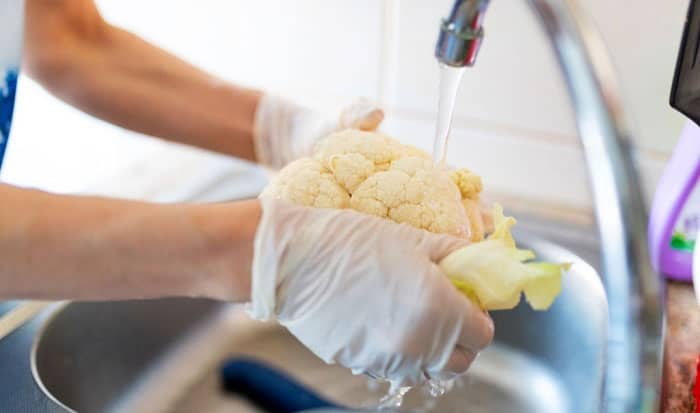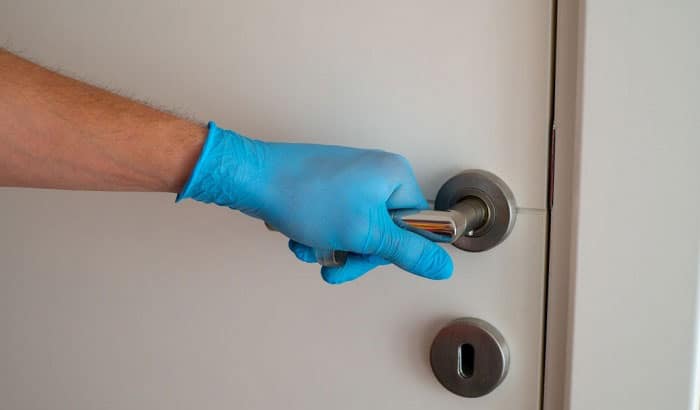Gloves come in various categories, such as snow gloves, driving gloves, and medical gloves. Medical gloves are the disposable ones that can be used for examination, surgical, or chemotherapy purposes.
There are two types of examination gloves: non-sterile and sterile. Different from sterile gloves, non-sterile gloves used for medical purposes do not go through the process of sterilization. However, they must meet all the standards by the Food and Drug Administration (FDA) and have a 1.5 – 2.5 Acceptable Quality Level (AQL).
Therefore, although not sterilized, non-sterile gloves are useful in many scenarios. You might wonder, “When should non-sterile gloves be worn?” Well, I’ll give you the answer in this article.
- Settings in Which Non-Sterile Gloves Are Worn: Most commonly, people use non-sterile gloves for food processing and medical practices. I’ll discuss other cases below, as well.
- Steps to Put On A Pair of Non-Sterile Gloves: Put on one glove at a time to prevent contamination.
- Steps to Remove Non-Sterile Gloves: Pull down one glove and turn it inside out. Then, gather that glove while removing the remaining one to prevent the spread of microorganisms.
- Some Safety Considerations: Make sure your hand is hygienic every time you put on a pair of gloves, and change your gloves whenever they are contaminated.
Now that I have briefly discussed what is included in this article, let’s jump right into the first section!
Table of Contents
Settings in Which Non-Sterile Gloves Are Worn
As I have mentioned above, here is the list of three examples of when gloves should be worn:
1. Medical practices:
Non-sterile gloves should always be used when you contact potentially infectious fluid, such as blood, and non-intact skin, like wounds.
One scenario I can think of is when you are in the standard aseptic preparation. You should put on non-sterile gloves before using antiseptic wipes on a patient’s skin or sterilizing medical equipment and instruments. Additionally, providing first-aid to anybody requires the use of non-sterile gloves so that you won’t accidentally infect their open wounds.
2. Food processing:
Nobody wants to consume something that is touched by another person’s dirty bare hands, right? Thus, it is reasonable that wearing gloves while processing food is vital, especially at the factories. However, a non-sterile pair of gloves should be good enough for this process.
3. Other circumstances in which you need to protect your hand:
Non-sterile gloves are usable in cases where your bare hands need to be protected. For example, when you work in a chemistry lab, it is essential that you put on non-sterile gloves to prevent your hands from direct contact with hazardous chemicals.
Steps to Put on a Pair of Non-sterile Gloves
As we have learned the appropriate situation to put on non-sterile gloves, it’s good to follow up with how to properly put them on.
- Step 1: Make sure you perform the necessary hand hygiene steps before proceeding. This requires the use of soap, clean water, and some clean paper towels, or an alcohol-based hand rub (ABHR)
- Step 2: Take only ONE glove out of the packaging. It is important that you put on one at a time to reduce the probability of contaminating the glove. Also, check to see if the gloves’ size fits your hand perfectly as you don’t want it to be too small or too large.
- Step 3: Apply the first glove as you would with other kinds of gloves. That is, insert your hand through the opening part of the glove and pull it up to your wrist.
- Step 4: Use your gloved hand to take out another glove.
- Step 5: Repeat the instructed steps with the second glove. Avoid touching your gloved hand on your forearm.
- Step 6: Adjust the gloves so that they cover your wrists well to prevent contamination.
- Step 7: Avoid touching anything else before you start your task.
Steps to Remove Non-sterile Gloves
Then, once you have finished your job, you need to know how to get rid of the non-sterile gloves. Surprising as it may be, removing a pair of non-sterile gloves requires some techniques in order to reduce the possibility of microorganisms spreading.
- Step 1: Hold the outside of the glove at about half an inch below the cuff, which is where the cuff of your glove’s opening is. Be careful not to touch your other glove on your wrist.
- Step 2: Use the other hand to pull the glove straight down so that it is turned inside out.
- Step 3: Continue to hold the inside-out glove with your gloved hand.
- Step 4: Gather the inside-out glove so that it is completely held in your gloved hand.
- Step 5: Insert the fingers of your bare hand inside the remaining glove’s cuff.
- Step 6: Pull the glove down so that it is inside out and cover your first glove.
- Step 7: Throw the gloves in the designated place for used non-sterile gloves.
- Step 8: Perform the steps for hand hygiene again to eliminate any microorganisms or sources of contamination that could have accidentally stuck on your hand.
Check out this video for a better illustration of how to put on and remove non-sterile gloves.
Some Safety Considerations
This is an extra section about things you might want to know when wearing non-sterile gloves. Firstly, you must make sure that your hand is dry and clean before putting on and after removing the gloves since gloves cannot replace the role of hygiene.
Secondly, in a medical setting, it is very important that a pair of gloves is only used for one patient; you have to change a new one when working with a new patient. Reusing gloves might cause cross-contamination of antibiotic-resistant organisms.
While performing a task on the same person, changing a new pair of gloves is needed whenever the site is changed from a contaminated to non-contaminated one. Moreover, remember that any misuse of non-sterile gloves is associated with the transmissions of pathogens, which are organisms that cause different diseases to humans.
Additionally, since gloves come in various sizes, be sure to choose the gloves that fit you the most. To be more specific, gloves that snugly fit around your wrists and hands but still allow you to freely move your fingers are the best.
Conclusion
I hope that this article has satisfied your query of “When should non-sterile gloves be worn?” Moreover, you can try to apply the techniques to put on and take off gloves using the instructions we have here.
Let me know what you think about this article in the comments. If you enjoyed it, share it with your friends and family as well.

Veronica is our content editor. She is a talent in delivery. Her main work is editing and writing articles that are both informative and simple to follow. She is in charge of synthesizing our understanding of what personal protection equipment (PPE) is needed in each job, how to best apply it, and how to visualize that equipment.




